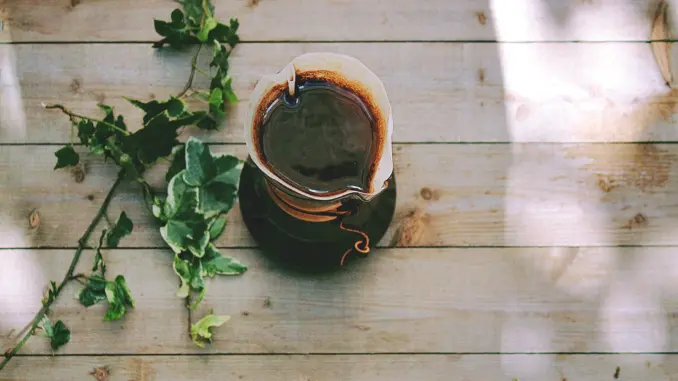
In this series, we ask coffee professionals how they like to drink their coffee while at home and when traveling.
BY TANYA NANETTI
SENIOR ONLINE CORRESPONDENT
Feature photo by Toa Heftiba via Unsplash
For many coffee professionals, coffee brewing is not just a job.
Choosing your favorite beans and deciding on the best method to brew them, visiting a specialty coffee shop to try something new, enjoying the drink alone, chatting with the barista, or drinking it with friends and family are all part of the coffee ritual for many coffee professionals.
And things often change while on the road, when visiting distant cities with a completely different coffee scene.
Kenneth Davids, editor-in-chief and one of two managing partners of CoffeeReview.com (the world’s most widely read and influential coffee buying guide, created by Kenneth and Ron Walters more than 25 years ago), has lived most of his adult life in the San Francisco area is often on the road working as a coffee consultant, mainly in Asia. Furthermore, Kenneth has published four coffee books covering many different coffee topics, from how to buy, brew, and enjoy coffee to how to roast it at home—his latest book is 21st Century Coffee: A Guide.
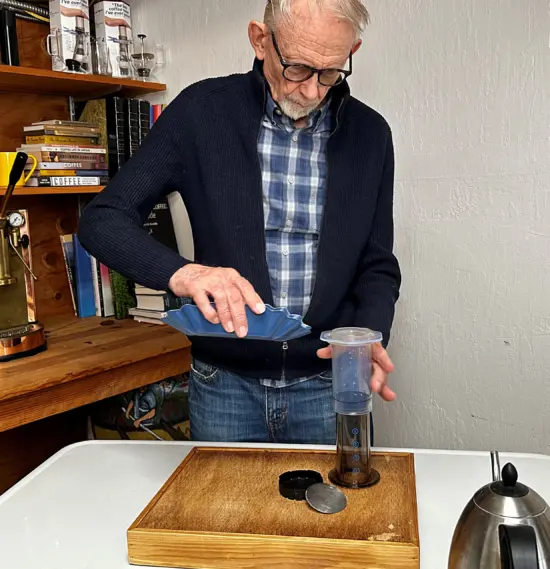
During his daily job at the Coffee Review lab, Kenneth brews coffee following rigorous tasting procedures. There, he tests coffees intended for brewing using the SCA cupping protocol. He tests coffees intended for espresso on a late-model La Marzocco Linea one-group machine, alongside a Mazzer grinder.
But when he is at home relaxing, Kenneth turns the tables and brews coffee in a slightly different and personal way.
“At home I personally brew coffee every morning for my wife and me in a Technivorm Moccamaster,” Kenneth shares. “I normally brew at a 16:1 ratio of brew water to coffee, and I always take my coffee black. In the afternoon, I often make a single 6-ounce cup for myself using the AeroPress in an inverted configuration with a very strong 13:1 ratio, but I compensate for the overdosing with a very short extraction time, 1 to 2 minutes, including the press.”
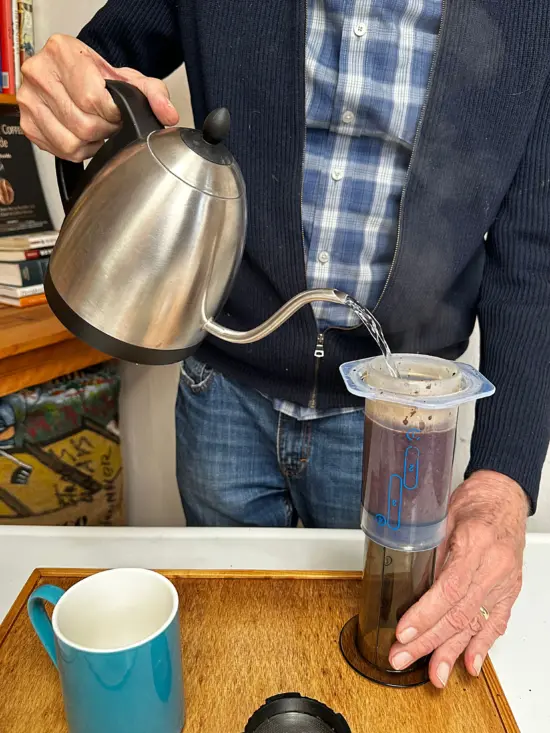
When he was younger, Kenneth often spent most of the day in his favorite café, but now he’s an at-home and at-the-lab guy, drinking most of his coffee at home, or at the Coffee Review lab.
But of course, there are also occasions when he goes out to visit a nice specialty-coffee shop, and here his order depends on the shop and what’s going on at the time.
“If the barista is not slammed and pourover is an option, I always order a pourover of what I feel is the most interesting coffee on the menu.” Kenneth explains. “If there is no pourover option I usually order a double espresso to insure getting a fresh cup. But if the beans in the grinder look like they were roasted too dark to my taste, I order a cappuccino.”
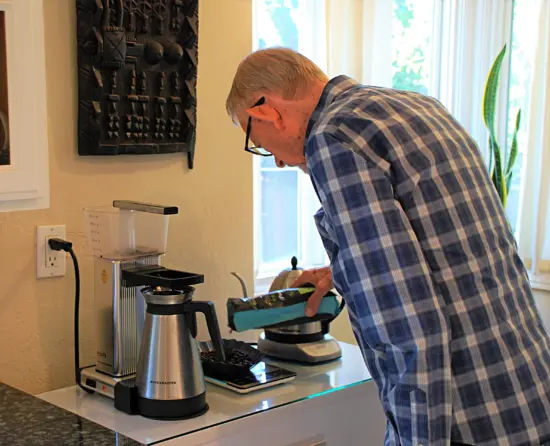
Things change slightly when Kenneth travels: While he is a coffee professional and a coffee lover, he doesn’t always travel with his coffee gear, preferring to explore what the destination has to offer.
If going to visit friends or family often means bringing a bag of coffee as a gift (maybe using their coffee gear to brew the coffee), traveling far away means having the opportunity to discover something new, frequenting many more cafés than when he’s at home.
“I look at traveling as a research opportunity, a way to experience coffee as potential readers of my books may encounter it,” Kenneth says. “It’s true that when the coffee is really bad I may only taste it, not drink it. If I do face a bad coffee combined with real need, I’ll add half-and-half to the cup. If that doesn’t work, I suffer and wait.”
Most of the time Kenneth sticks to specialty-coffee shops, drinking “commercial” coffee only if he’s desperate and there are no alternatives.
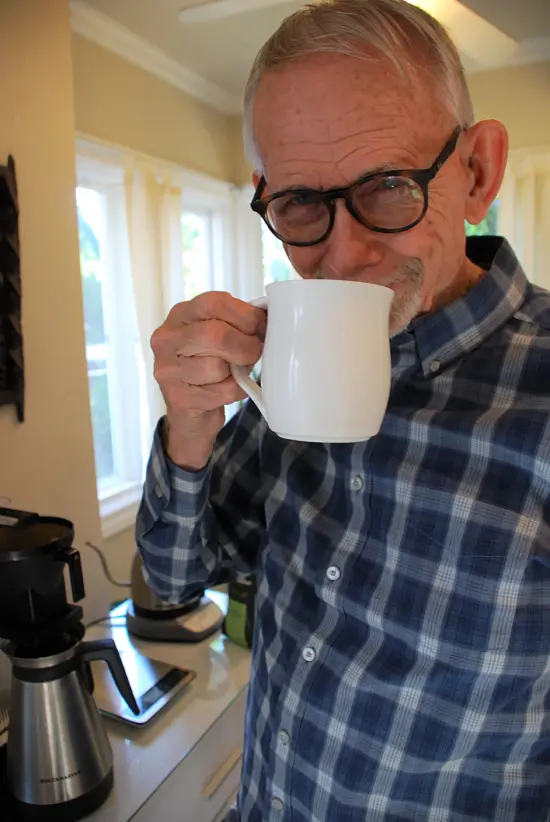
At the same time, however, Kenneth enjoys trying local coffee specialties (not strictly related to specialty coffee), and he confesses that over time he has come to appreciate certain technically flawed brewing processes, often part of local coffee traditions.
“In much of northern and central Europe, for example, if you order a black coffee rather than an espresso you usually get a long black, meaning an extended espresso shot, bitter, over-extracted, and sharp,” Kenneth says. “In Vienna and other places, they serve such 3- or 4-ounce black coffees with a tiny ceramic pitcher of true cream and a glass of carbonated water. I became used to drinking the bitter coffee softened by the cream and washed down by the water.”
Read other entries in this series here.
ABOUT THE AUTHOR
Tanya Nanetti (she/her) is a specialty-coffee barista, a traveler, and a dreamer. When she’s not behind the coffee machine (or visiting some hidden corner of the world), she’s busy writing for Coffee Insurrection, a website about specialty coffee that she’s creating along with her boyfriend.

